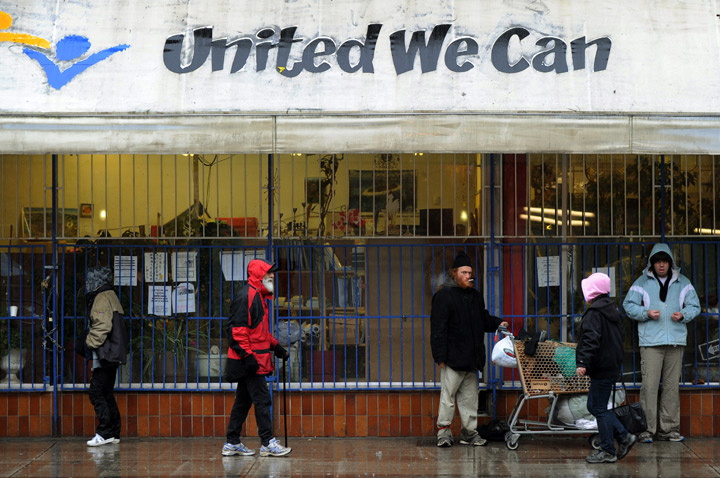Why are people on social assistance and how can you get them off? Thanks to skewed National Household Survey response rates, we don’t really know.

Recipients of needs-based payments from any level of government or charity were significantly less likely to fill out Statistics Canada’s National Household Survey, a Global News analysis shows.
National Household Survey: Here’s what we know about what we don’t know
The higher the percentage of social assistance recipients in a neighbourhood, the higher the community’s non-response rate. Areas in east-end and north-end Hamilton, Ont., as well as East Vancouver, had non-response rates of more than 35 per cent. In all these neighbourhoods, more than a fifth of the population received some kind of social assistance in 2011.
Interactive: Track the correlation between people on social assistance and survey non-response
That underrepresentation, while perhaps unsurprising (we already knew poorer people were less likely to fill out the survey) can cause problems for anyone designing services for these populations, or trying to get them out of poverty. In a nutshell, it’s tough to know what’s keeping them poor.
“Unless a policy-maker knows how those poor families live, how can he or she know how to reach them, or what those families need?” said Carleton University economist Frances Woolley. “How can the policy-maker prevent poverty, unless he or she knows what causes people to fall into poverty?”
Public health agencies and other groups who’d normally rely on census data are now wondering what they’ll do without it. Many may try to collect it themselves – paying for data collection by cutting the very services they’re trying to provide.
“It means that I have to take some of the funding that’s available for programmatic activity and redirect it into information collection,” said Paul Van Buynder, Chief Medical Officer for Fraser Health in B.C.’s Lower Mainland.
“It’s obviously disappointing” to divert funds to compensate for Statscan’s shortfall, Van Buynder says – “particularly at a time when many provinces are facing tightening fiscal settings and you’ve really got to be very targeted about what you’re doing.”
Watch: Rosana Pellizzari, Peterborough, Ont., Medical Officer of Health, on challenges facing her staff given low NHS response rates
Simcoe Muskoka District Health Unit, where non-response rates topped 30 per cent, is in the same spot.
“We may have to consider collecting our own data,” says Brenda Guarda, manager of population health assessment, surveillance and evaluation.
But that’s a complex – and potentially pricey – proposition.
“You cant just go out and say, ‘I’m going to be collecting data’ – you need to be very clear about the questions you need to ask, why you need to ask them. You don’t want to be asking questions that are just nice to know. … You need to be sure that whatever you collect is valid and representative of your population.”
Industry Minister James Moore did not respond to requests for comment Friday. He has yet to announce what his government’s plans are for the 2016 census.
Watch: Peterborough Residents on whether we need the National Household Survey


Comments